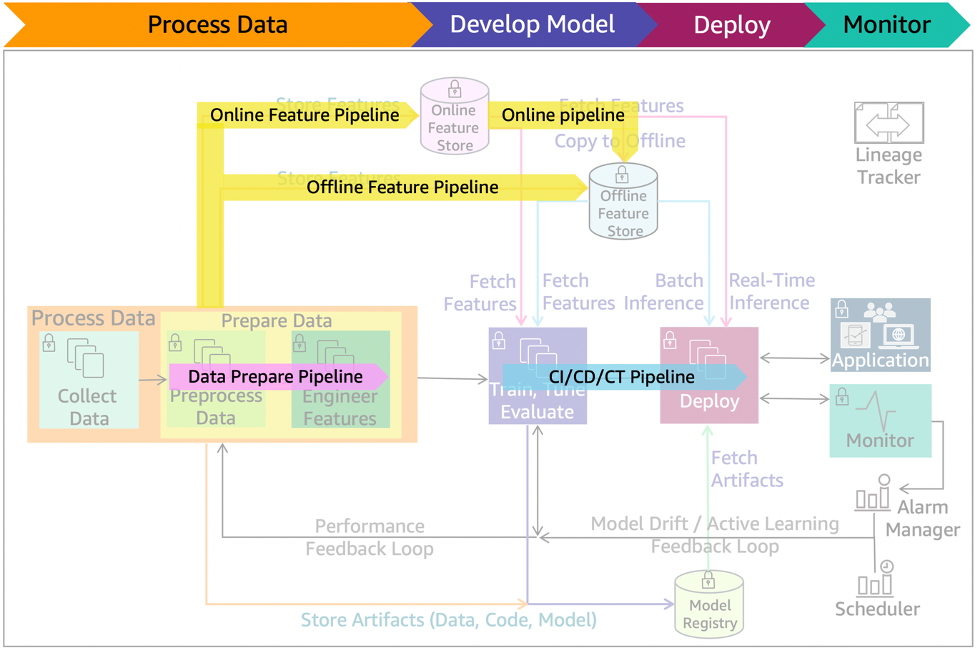Model training and tuning
In this phase, you select a machine learning algorithm that is appropriate for your problem and then train the ML model. You provide the algorithm with the training data, set an objective metric for the ML model to optimize on, and set the hyperparameters to optimize the training process.

Figure 12: ML model training and tuning: main components
Model training, tuning, and evaluation require prepared data and engineered features. The following are the main activities in this stage, as listed in Figure 12:
-
Features – Features are selected as part of the data processing after data quality is assured
-
Building code – Model development includes building the algorithm and its supporting code. The code-building process should support version control and continuous build, test, and integration through a pipeline.
-
Algorithm selection – Selecting the right algorithm involves running many experiments with parameter tuning across available options. Factors to consider when evaluating each option can include success metrics, model explainability, and compute requirements (training/prediction time and memory requirements).
-
Model training (data parallel, model parallel)– The process of training a ML model involves providing the algorithm with training data to learn from. Distributed training enables splitting large models and training datasets across compute instances to reduce training time significantly. Model parallelism and data parallelism are techniques to achieve distributed training.
-
Model parallelism is the process of splitting a model up between multiple instances or nodes.
-
Data parallelism is the process of splitting the training set in mini-batches evenly distributed across nodes. Thus, each node only trains the model on a fraction of the total dataset.
-
-
Debugging/profiling – A machine learning training job can have problems including: system bottlenecks, overfitting, saturated activation functions, and vanishing gradients. These problems can compromise model performance. A debugger provides visibility into the ML training process through monitoring, recording, and analyzing data. It captures the state of a training job at periodic intervals.
-
Validation metrics – Typically, a training algorithm computes several metrics such as loss and prediction accuracy. These metrics determine if the model is learning and generalizing well for making predictions on unseen data. Metrics reported by the algorithm depend on the business problem and the ML technique used. For example, a confusion matrix is one of the metrics used for classification models, and Root Mean Squared Error (RMSE) is one of the metrics for regression models.
-
Hyperparameter tuning – Settings that can be tuned to control the behavior of the ML algorithm are referred to as hyperparameters. The number and type of hyperparameters in ML algorithms are specific to each model. Examples of commonly used hyperparameters include: learning rate, number of epochs, hidden layers, hidden units and activation functions. Hyperparameter tuning, or optimization, is the process of choosing the optimal hyperparameters for an algorithm.
-
Training code container – Create container images with your training code and its entire dependency stack. This will enable the training and deployment of models quickly and reliably at any scale.
-
Model artifacts– Model artifacts are the outputs that results from training a model. They typically consist of trained parameters, a model definition that describes how to compute inferences, and other metadata.
-
Visualization – Enables exploring and understanding data during metrics validation, debugging, profiling, and hyperparameter tuning.

Figure 13: ML lifecycle with pre-production pipelines
Figure 13 shows the pre-production pipelines. The data prepare pipeline automates data preparation tasks. The feature pipeline automates the storing, fetching, and copying of the features into and from online/offline store. The CI/CD/CT pipeline automates the build, train, and release to staging and production environments.